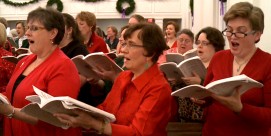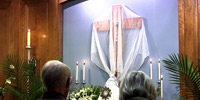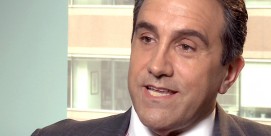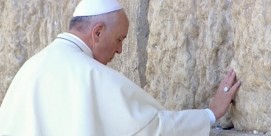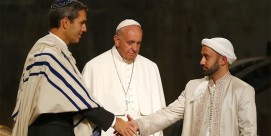Letters from Assisi: The Pope and the Saint
By Wendy Murray
Pope Benedict XVI’s first official visit to Assisi, the birthplace of St. Francis, came at a time when emotions in the local religious community range from devotion to ambivalence toward the pope. The stated purpose of the papal visit was to mark the 800th anniversary of the conversion of Italy’s patron saint. Little was said, however, about the rocky relationship Benedict has had with local friars over the past two years.
The pope’s eleven-hour pilgrimage on June 17 included stops at primary sites in and around Assisi associated with Francis’s life and mission. Between 1205 and 1207, in a sometimes tortured process, the future saint, then the twenty-five year-old son of a wealthy clothier named Pietro Bernadone, ultimately renounced his flamboyant lifestyle as “king of partying” (as Benedict put it), his bond with his father, and all associated worldly undertakings in order to embrace a life of simplicity, poverty, and devotion to the gospel.
Prior to his conversion, Francis had been known among townspeople and his peers as a poet, a warrior, and a lady’s man. His popularity had indeed won him the title “dominus” or king of the rowdy youth who prowled Assisi’s streets at night drinking and singing. This made his turn-around all the more shocking for the locals. Ultimately, the same qualities that endeared him to his partying friends inevitably commanded a following of many who embraced his radical expression of Christian fidelity.

The turnout in Assisi for Pope Benedict was underwhelming. The centerpiece of the day was the Mass in a courtyard below the Basilica of Saint Francis, which houses the saint’s tomb. A friar in attendance in the upper piazza said the numbers “weren’t even close” to what he and others had anticipated. In the lower piazza, where the pope addressed the crowd, some seats remained empty.
In November 2005, the newly elected Pope Benedict XVI issued a decree tightening ecclesial control of the primary holy sites of Francis. Benedict revoked both the autonomy granted the Franciscans by Pope Paul VI in 1969 and their authority to serve as hosts and ambassadors and made all events in Assisi contingent upon the approval of Bishop Domenico Sorrentino, whom Benedict dispatched to the diocese in February last year.
Benedict’s decree seemed to have been propelled by controversy surrounding Assisi after a peace summit convened there in 1986 by John Paul II. Critics at the time claimed the event created an atmosphere of confusion about the unique identity of Catholic belief. The Dalai Lama, the Archbishop of Canterbury, Muslims, Shintoists, Buddhists, and others gathered in Assisi to pray for peace, hosted by the Catholic Church as part of the affirmation of the United Nation’s Year for World Peace.
Such a gathering of disparate religious elements praying together in a Christian pilgrimage town spawned fear within the conservative curia that the Catholic identity of their saint might be compromised. In 1986, then Cardinal Joseph Ratzinger, serving as the Vatican’s doctrinal czar, was quoted as stating the Assisi gathering “cannot be the model” for interfaith dialogue. Since taking the papal throne, Benedict has had a strong hand in reasserting Catholicism’s exclusive Christian identity and avoiding any appearance of religious relativism. Francis, he said recently, “was above all a convert,” apparently in an effort to emphasize the saint’s own identification with Christianity.
John Paul II went on to sponsor two more interreligious summits in Assisi, in 1993 and 2002, and in 2000 Ratzinger’s office at the Vatican, the Congregation for the Doctrine of the Faith, released a declaration endorsed by John Paul that tried to allay further confusion. The document, titled Dominus Iesus, reiterated the basic Christian assertion that humanity finds salvation only through Jesus Christ. This, in turn, prompted some outside the Christian camp to accuse the Catholic Church of intolerance. Ratzinger attended the 2002 event in Assisi, and the following year he wrote that it is “indisputable that the Assisi meetings, especially in 1986, were misinterpreted by many people.”
Last Sunday in Assisi, Benedict’s only mention of John Paul’s first interfaith event there was couched positively: “In the current context I cannot forget the initiative of my predecessor of holy memory, John Paul II, who convened here in 1986 representatives of Christian confessions and different religions of the world for a meeting of prayer for peace. It was a moment of grace, as I confirmed some months ago in my letter to the bishop of this town on the occasion of the twentieth anniversary of that event [in September 2006]. [John Paul’s] choice to celebrate that meeting in Assisi was inspired from the testimony of Francis himself, as a man of peace, to whom many from other cultural and religious positions look at with sympathy.”
Benedict said that in Francis’s hometown, the “city of peace,” he felt a duty to make a heartfelt appeal for peace. He wished “all armed conflicts that bloody the Earth may cease and weapons may go silent and so that everywhere hate gives way to love, offense to forgiveness and discord to union.”
During his visit to Assisi’s Cathedral of San Rufino, the seat of the bishop, Benedict also made an appeal to friars and sisters from all branches of Franciscans not to make themselves “islands” by isolating themselves from the larger Catholic community.
Francis remains among the Catholic Church’s most popular and most controversial saints. His popularity springs from his unbending devotion to simplicity, humility, and advocacy for common people and those on the fringe of society. He commanded the devotion of thousands during his short life. Therefore his movement proved beneficial, keeping lay people engaged in the Catholic Church. Since saints kept faith alive in the hearts of the people, Pope Gregory IX hastily canonized Francis in 1228, two years after his death. Canonization, however, requires that saints must be proven to have been heroically virtuous (among other things). In the case of Francis, he was indeed “heroic in virtue,” but only after the very messy beginnings of his wild youth. This prompted several rewrites of various versions of his life, which in turn have made historical examination of the saint contentious.
As Benedict concluded in Assisi: “His impassioned prayers reveal his way of living according to the form of the holy Gospel, his choice of poverty and to seek Christ in the face of the poor. His conversion to Christ reveals virtue that can apply to the grand themes of our time in the search for peace, the safeguard of nature, and the promotion of dialogue between all humanity. Francis is a true teacher in these things.”
Wendy Murray’s book, A Mended and Broken Heart: The Life of Francis of Assisi, is forthcoming next April from Basic Books.

